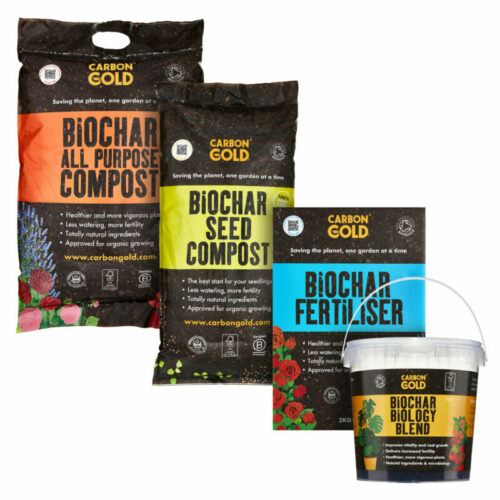Biochar’s effect on soil conditions
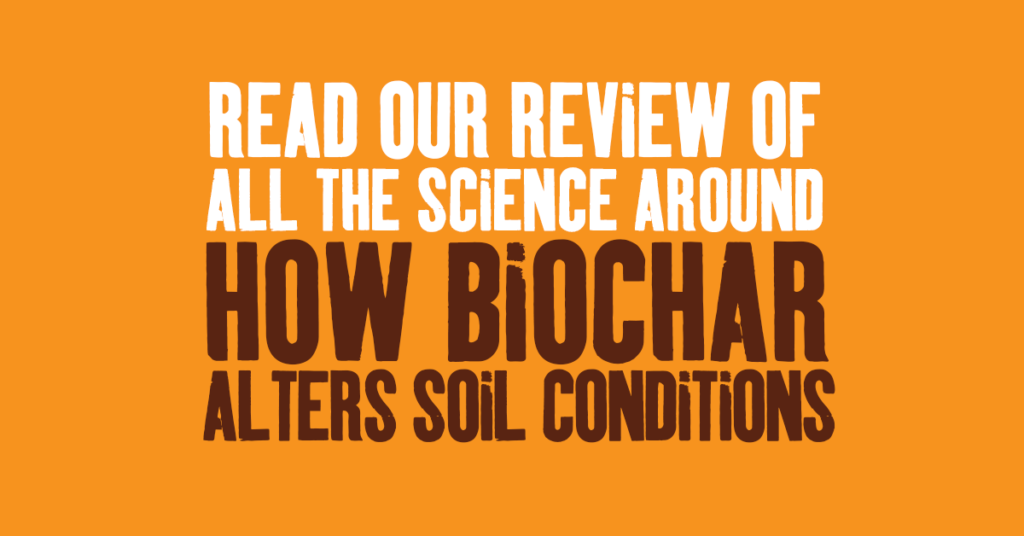
Overview
Carbon Gold’s flagship biochar product is Biochar Soil Improver, and it’s called that for a reason. Not only does biochar improve the structure of the soil, but it also improves its water-holding capacity and aeration too. It also provides the perfect soil conditions and refugia for beneficial microbiology like mycorrhizae and Trichoderma.
But don’t just take our word for it. There are a number of studies into biochar’s effect on soil that is completely independent of Carbon Gold. Below is a summary of five such studies, their methodologies and findings. We’ve also included some highlights if you want a quick summary to read.
Highlights
- Biochar will increase water-holding capacity and cation exchange capacity of sandy soils; clay and silt soils with added biochar can favour soil aeration. Water-holding capacity in sandy soils can be increased by up to 22% and soil compaction ameliorated by 15%.
- Biochars are alkaline in nature and are effective liming agents. Some biochars e.g. poultry-litter derived chars are high in carbonates and are particularly effective. Overall soil pH increase in acidic soils was seen as one of the main reasons for crop yield increase with biochar addition.
- Biochars provide habitats for soil microbes and can also provide them with nutrients as well.
- Significant yield increases have been found where medium and coarse-textured soils have had biochar added, likely due to improved water holding capacity.
- Soil organic carbon is enhanced by biochar addition and biochar can stabilise organic matter and reduce the rate of breakdown, by sorption of organic compounds and disruption of microbial enzymes which break down organic matter. An example given was of biochar added at 20 and 40 te/ha to a calcareous soil low in organic carbon, the biochar increased the % soil organic carbon by 25% and 42% respectively. In a separate paper Laird et al. found significant (+46% average 6 sites in the USA) increases in soil organic carbon for biochar plus fertiliser compared to fertiliser only. The effect was shown to last for at least 4 years (the length of the trial).
- Biochars, particularly wood and crop-residue based, improved a range of physical soil properties as follows: bulk density reduced by 7.6%, aggregate stability increased by 8.2%, soil porosity increased by 8.4%, available water capacity increased by 15% and saturated hydraulic conductivity increased by 25%. The above properties will enhance crop growth by improving drainage and allowing greater root penetration of soils.
Case studies
Subedi, R. et al (2017) summarised the many benefits of adding biochar to soils, sandy soils have greater water holding capacity, silt and clay soils have increased soil aeration. The greater surface area of biochar amended soils can favour microbial communities and soil sorption capacities due to increase in Cation Exchange Capacities. Wood-derived biochars are inherently low in nutrients, and fertilisers need to be added at the same time as the biochar to increase nutrient retention
Biochars are alkaline in nature and will act as liming agents. Poultry-litter derived biochar contains a high concentration of carbonate and is particularly effective. Biochars are fully sterilized during pyrolysis, their high porosity provides a protected environment for microbial growth and can also provide nutrients for microbial growth
Jeffery, S. et al (2011) reviewed a very large number of field experiments where biochar had been applied and yields recorded. Looking at soil textural class and biochar addition, significant crop yield increases were seen with medium (loam) and coarse(sandy) textured soils but not fine textured e.g. (clays, silts). However, there wasn’t a negative effect of biochar on crop yields in the fine texture classes. Jeffery reported a small (10%) but significant yield increase in crops with biochar additions overall but cautioned that it is likely that the main benefits of biochar are coming from the liming effects of acidic soils and water-holding effects on coarse and medium textured soils .
Al-Wabel et al (2018) reviewed a number of papers which looked at biochars and their influence on soil properties. One paper cited showed that the application of medium (20 t ha−1) and high (100 t ha−1) biochar ameliorated soil compaction by up to 15% and
water holding capacity (WHC) by up to 22%, leading the authors to conclude that, in terms of hydrology, biochar amendment would be more effective in low‐silt soils. Addition of 20 te/ha biochar to a clay soil did not increase water retention or improve drainage. The authors also cited papers which showed that soil organic carbon was enhanced by biochar applications. An example given was of biochar added at 20 and 40 te/ha to a calcareous soil low in organic carbon, the biochar increased the % soil organic carbon by 25% and 42% respectively. Likely reasons for the increase include improved organic matter sequestration via biochar sorption of organic carbon. High-temperature biochars have greater surface areas and can absorb more organic matter. Further reasons for biochar stabilizing organic matter include disruption of microbial enzymes which break down organic matter and the possible toxic effect of compounds present in biochars on soil microbes.
Laird et al (2017) in the USA reported few studies for more than 1-2 seasons with the same biochars. Their study looked at biochar and manure applications over a number of years and sites, with common NPK fertiliser and cropping system management. 6 sites across the USA from Texas to Northern USA were chosen (USDA ARS sites), treatments were control (NPK only), NPK plus manure, NPK plus biochar at 20 te/ha and NPK plus manure and biochar. Crops grown were maize (5 sites) and sorghum (1 site) for either 3 or 4 crop years. Standard hardwood biochar (mixed species) was used from Canada. The total carbon content of the biochar was 70.0% and the pH 5.6.
Following applications of the treatments the biochar and biochar plus manure treatments significantly increased soil organic carbon levels from 1.41% to 2.11% for the surface 0-15 cm of soil (no difference between biochar and biochar + manure), average all sites + 46% over control soil with NPK only. These different effects were significant throughout the duration of the trials (around 1500 days – 4years). There was (unsurprisingly) no difference in surface soil pH per- and post-treatments including the biochar treatment, with an initial low pH for biochar (5.6). There was no consistent yield effect of the biochar compared to the control (NPK only) treatments except at one site (Washington), a sandy site with low moisture retention. This is consistent with data from e.g. Jeffery (2011) , indicating greatest responses to biochar additions in soils under tropical conditions and sandy sites with low moisture retention.
Omondi et al. (2016) carried out a meta-analysis of studies of biochar and benefits to soil physical properties (38 papers, 128 datasets). Soil bulk density was reduced by an average of 7.6% across all rates and sources of biochar (wood, manure, crop residues), most of the results were for coarse-textured soils, but for fine-textured soils, a reduction of 9% was found. Reduced bulk density would enable greater root penetration and movement of water.
Aggregate stability was increased by 8.2 % on average, particularly wood and crop residue biochars. Stable aggregates will lead to better drainage through the soil profile.
Soil porosity was increased by an average of 8.4 %, very high rates of biochar (above 80 te/ha)increased soil porosity by up to 19%.
Available water capacity (the water held in the soil for plant growth between field capacity and permanent wilting point) was increased by 15% on average, up to 25% with very high additions of biochar
Finally, saturated hydraulic conductivity was increased by 25% on average – increased water movement in soils.
Our biochar products can be purchased online through our shop, or alternatively through our stockists. Contact us directly if you require further information
Stay in the know
Subscribe to the mailing list to keep up with new products & industry developments. Don't worry... we don't like spam either.
Article Tags
soil conditionsShare This Article
Related articles
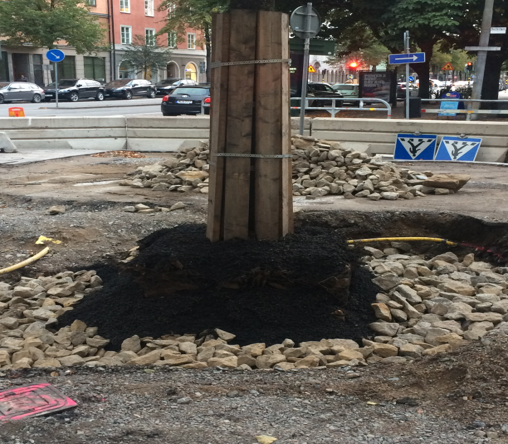
Stockholm Tree Pits
Category: Tree Care
In 2014, Bjorn Embrén played a pivotal role in the creation of the Stockholm Tree Pit method. This system, initially…
Read MoreCarbon Gold
Biochar
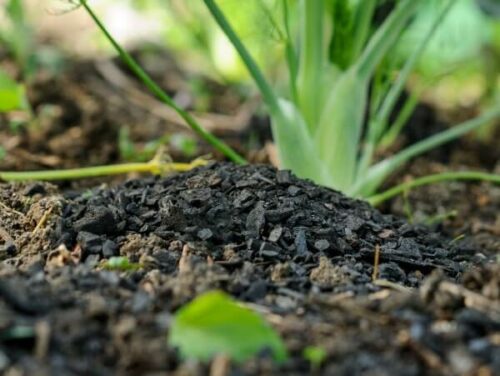

Houseplants in the Bedroom
Category: FAQs, Garden and Home, Guides
We all know that houseplants have a huge positive impact on health and wellbeing – both physically and mentally. They…
Read MoreCarbon Gold
Biochar

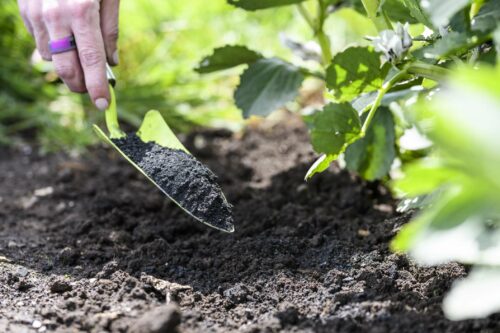
When to prepare your garden for Spring
Category: FAQs, Garden and Home, Gardening Tips, Guides
As winter’s chilly embrace starts to loosen and the soil beneath us begins whispering tales of spring, it’s the gardeners’…
Read MoreCarbon Gold
Biochar






